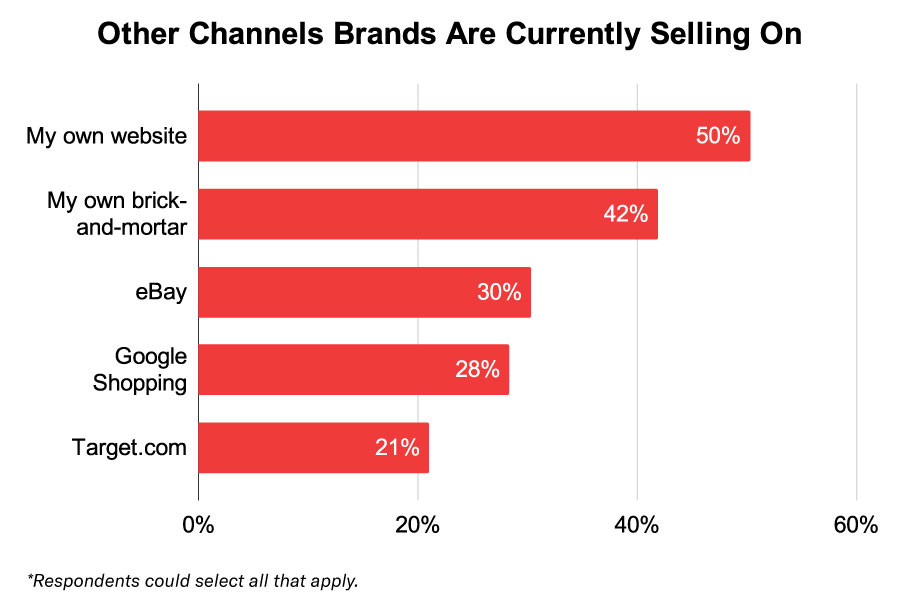Resources - Blog
5 Amazon Selling Strategies During COVID-19

Stay on top of the latest e-commerce and marketplace trends.
During the current COVID-19 crisis, Amazon sellers are facing even more challenges due to the company’s recent policy changes, surges in product demand, and delays in supply chains. Below are five ways that merchants can adapt their selling strategies and conform to the current coronavirus environment to safeguard their business.
1. Stay Updated on Amazon’s Policy Changes
Amazon’s first COVID-19-related policy change came on March 17, 2020, when it announced it would restrict FBA inventory shipments for non-essential items at its U.S. and EU warehouses, and would only be accepting high-demand products that are now deemed as essential.
This temporary policy went into effect to free up warehouse space for household staples, groceries, medical supplies, baby necessities, health and beauty products, pet supplies, and other needed items. These were the most-wanted products that customers were buying to stay safe, healthy, and comfortable while confined to their homes at the height of the pandemic. However, these limits on non-essential products have since been lifted.
This announcement startled Amazon sellers, especially those who saw their sales skyrocket for items that Amazon does not consider to be essential. These items include products like toys and games, home office supplies, crafts, books, and more that are in high demand when consumers are forced to stay home. Such products are selling fast, as sellers are struggling with how to meet this demand in light of the current FBA shipment restrictions.
Additionally, Amazon is not allowing new listings for coronavirus-related products, like hand sanitizers and face masks, and is closely monitoring its marketplaces for false coronavirus claims in product listing descriptions and backend search terms.
Amazon had recently removed 1 million listings that had such COVID-19 claims. This is why it is essential for all sellers to audit their product listings to ensure they are compliant with all of Amazon’s current policies and avoid having their listings shutdown or their seller accounts suspended.
2. Explore Alternative Fulfillment Channels
During the height of the pandemic, Amazon suspended non-essential FBA inventory shipments, intended to last through April 5, 2020. However, sellers were able to resume shipping non-essential items by the middle of April 2020, with quantity limits lifted on May 9, 2020.
Sellers can check their Restock Inventory page in their Seller Central account to see if any of their products become eligible for FBA inbound shipments. For those products that are not yet qualified, sellers need to find an alternative fulfillment option if their FBA stock levels are running low.
If and when your FBA inventory runs low, you can easily convert those listings from FBA to Seller Fulfilled Prime (SFP) or Fulfilled by Merchant (FBM). SFP is only an option if you have been accepted into this program in the past and are not currently utilizing it, as Amazon is not accepting new registrations for SFP.
If you were not previously approved for SFP, you could convert your listings from FBA to FBM by choosing the “Change to Fulfilled by Merchant” option in the dropdown menu for each listing in your Seller Central Inventory dashboard.
Whether you go with SFP or FBM, you will need to have the capacity to store, fulfill, and ship all orders on your own. If you cannot do this, you can partner with a third-party logistics (3PL) company, move your inventory to their warehouse, and have them handle all customer shipments for you.
3. Create a Diversified Marketplace Strategy
As the largest e-commerce marketplace, Amazon accounts for nearly 40% of the U.S. e-commerce market. But given its continually changing policies, fierce competition, and high seller fees, now is the time to consider selling your products on additional marketplaces, such as Walmart or eBay.

Relying on Amazon as your only sales channel and fulfillment partner makes sellers very vulnerable, especially during this already volatile time. Having a diversified marketplace strategy can help you avoid pitfalls during unexpected occurrences that are associated with relying exclusively on one selling channel.
Although Amazon is at the helm of the marketplace ecosystem with regard to both e-commerce share and audience size, there is a significant opportunity on Walmart and eBay for incremental revenue growth. Together, these three key marketplaces all make up a holistic e-commerce strategy. Therefore, you need to know how to position Amazon at the center and leverage Walmart and eBay as supporting platforms.
4. Adjust Your Ad Spend
73% of brands advertise on Amazon.
Indeed, many sellers and brands run ads on Amazon to gain more exposure for their products and drive more customers to their listings. Yet, given the surge of shoppers on Amazon now, your ads may be doing more harm than good, especially if your inventory levels are not meeting your customer demand. This why you need to re-evaluate your ad spend.
When you initially set your advertising budget, you likely did not account for the long-lasting COVID-19 crisis. Now is the time to reallocate your ad dollars based on demand and inventory. If stock is running low, turn off those ads, and instead, put your spend towards advertising products that have healthy inventory levels.
5. Create Valuable Content to Connect with Your Customers
As people are spending more time at home, they are doing almost 100% of their shopping online. This is why great content is more crucial than ever. Sellers can use this opportunity to engage with their customers and provide valuable content that brings awareness to your brand and drives sales.
The new content you create is not just for your Amazon product listings but also for your social media channels. Build a community for your brand, produce live videos, and look for other ways to expand your customer base.
For example, if you sell a kitchen gadget, share a video of a cooking demo or share recipes. If you sell exercise gear, share tips on how to incorporate your products into at-home workouts. Think about how your product meets the current needs of those staying home, and promote your content around fulfilling those needs.
Final Thoughts
While the COVID-19 crisis is temporary, these are tactics you may decide to keep in place long after this pandemic has passed. The ability to adapt new strategies and face challenges head-on are what all businesses need to achieve long-term success.
For more information on the coronavirus crisis and its impact on the Amazon marketplace, visit our COVID-19 resource center.
Explore an “AI-First” Optimization and Intelligence Platform for Sellers on Amazon
Learn what Feedvisor can do for your business.
When you partner with Feedvisor, you automatically receive access to our true, AI-driven technology and hands-on team of e-commerce experts. Contact one of our team members today to learn more about our end-to-end solution for brands and large sellers on Amazon, Walmart, and e-marketplaces.




